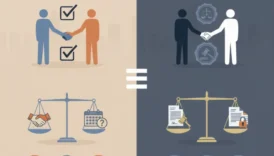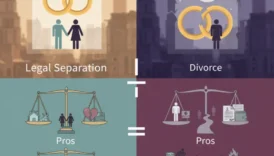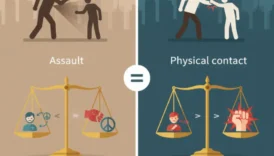Subpoena vs Summons: Legal Purpose and Use

In the legal system, both subpoenas and summonses serve as official documents issued by a court, yet they fulfill very different purposes. While a subpoena compels a person to provide testimony or evidence in a legal proceeding, a summons formally notifies an individual that they are being sued or required to appear in court. Because the two documents are often confused with one another, understanding their distinctions is essential for anyone navigating legal matters. This comparison article will break down the meaning, purpose, and use of each, highlighting how they work within the justice system and why knowing the difference is so important.
What Is a Subpoena?
A subpoena is a formal legal document issued by a court or authorized legal body that compels an individual to appear at a proceeding, provide testimony, or produce specific evidence relevant to a case. Unlike ordinary invitations or requests, a subpoena carries the force of law. If the recipient fails to comply, they may face penalties such as fines, contempt of court charges, or, in extreme cases, imprisonment. The word itself originates from Latin, meaning “under penalty”, which accurately reflects the seriousness of ignoring such an order.
At its core, a subpoena is designed to ensure that courts have access to the information and testimony needed to make fair and accurate decisions. Legal disputes often depend on witnesses, expert opinions, and documentary evidence. Without subpoenas, many of these crucial elements could remain hidden, leaving courts unable to resolve cases effectively. This makes the subpoena a vital tool in maintaining the integrity of the justice system.
There are generally two main functions of a subpoena:
- Compelling testimony – requiring a person to appear before a court or other legal authority to give sworn statements.
- Compelling evidence – ordering the production of documents, records, or physical evidence relevant to the matter at hand.
To give a real-world example, imagine a civil lawsuit over a business contract. If one side believes that important emails or financial records exist that support their case, they may request the court to issue a subpoena compelling the opposing party—or even a third party—to produce those records. Similarly, in a criminal case, a witness who saw an event might be served with a subpoena requiring them to testify in court, even if they are reluctant to appear voluntarily.
Subpoenas are not issued lightly. Judges and attorneys must typically demonstrate that the requested information is relevant and necessary to the case. In many jurisdictions, there are safeguards in place to prevent abuse, such as allowing the recipient to challenge the subpoena if it is overly broad, burdensome, or infringes on certain privileges (for example, attorney-client privilege or medical confidentiality).
In practical terms, receiving a subpoena means the recipient cannot simply ignore the document. It is a legal duty to respond appropriately, either by appearing in court, providing the requested evidence, or formally objecting through proper legal channels. For individuals unfamiliar with the legal system, this can be intimidating, but understanding that a subpoena is a court-backed order helps underscore why compliance is so important.
Types of Subpoenas
Subpoenas come in different forms, each designed to serve a specific function within the legal system. While the general purpose is to compel cooperation with a court process, the type of subpoena dictates whether the person must testify, provide evidence, or perform another legally binding act. Understanding these distinctions is important not only for legal professionals but also for anyone who may be served with such a document, as the obligations differ significantly.
The two most common categories are:
- Subpoena ad testificandum
- This type requires an individual to appear and give oral testimony under oath, either at a trial, deposition, or hearing.
- For example, a witness who saw a car accident might receive this kind of subpoena to describe what they observed.
- Failure to appear when ordered can lead to contempt of court and fines, since the person’s presence is essential to the judicial process.
- Subpoena duces tecum
- This form orders a person to produce documents, records, or other tangible evidence.
- It could include financial statements, contracts, medical records, or even electronic data such as emails and text messages.
- An important point is that the recipient may not be required to testify; instead, they must hand over the requested materials.
Some jurisdictions also recognize additional specialized forms, such as subpoenas directed at government agencies, corporations, or experts. These may involve unique rules due to the sensitive nature of the information or the parties involved. For instance, medical subpoenas often need to comply with strict privacy laws, ensuring that personal health information is not disclosed improperly.
Practical Implications
- For individuals: Receiving a subpoena ad testificandum means setting aside time to appear in court. For many, this may disrupt work or personal commitments, but compliance is mandatory.
- For businesses: Subpoena duces tecum can be particularly burdensome, as companies may need to search through thousands of records to find and deliver what is legally required.
- For experts: Courts sometimes subpoena professionals like doctors, accountants, or engineers, not only for documents but also for their expert testimony to clarify technical matters.
Key Takeaway
The type of subpoena matters because it dictates what the recipient must do. Whether it is showing up to testify or handing over critical documents, the legal obligation is binding. However, recipients do have rights, including the ability to challenge a subpoena if it is unreasonable or infringes on protected information. This balance between duty and rights is central to the fair functioning of subpoenas in the justice system.
What Is a Summons?
A summons is a formal legal notice issued by a court that informs an individual or entity that they are being sued or must appear in court. Unlike a subpoena, which compels testimony or evidence, a summons primarily serves as a notification of legal action. It alerts the recipient that a case has been filed against them and provides essential details such as the names of the parties, the nature of the claim, the court where the case is pending, and the deadline for responding.

The fundamental purpose of a summons is rooted in the principle of due process. In law, no person should face judgment without being properly notified of the claims against them and given an opportunity to respond. A summons ensures fairness by giving defendants the chance to prepare their defense, hire an attorney, or take other appropriate legal action.
Typical Contents of a Summons
A standard summons generally includes:
- Court information – the name and address of the court issuing the document.
- Parties involved – the plaintiff (person filing the case) and the defendant (person being sued).
- Case details – the subject of the lawsuit, such as breach of contract, personal injury, or debt collection.
- Response deadline – the specific number of days the defendant has to file an answer or motion.
- Consequences of ignoring – a warning that failure to respond may lead to a default judgment in favor of the plaintiff.
For example, if a tenant fails to pay rent, a landlord might file a lawsuit in civil court. The court then issues a summons to the tenant, officially notifying them of the claim and requiring them to respond within a set period, often 20–30 days. If the tenant ignores the summons, the court may grant the landlord a default judgment for the unpaid rent and possibly an eviction order.
How It Differs From a Complaint
A summons is often accompanied by a complaint, which provides the detailed allegations against the defendant. The summons acts as the official call to court, while the complaint explains why the lawsuit has been filed. Together, they form the foundation of civil litigation, ensuring that the defendant cannot claim ignorance of the case.
Key Point
A summons is not about gathering evidence or testimony; it is about establishing notice. It marks the official start of a legal dispute and sets in motion the defendant’s responsibility to respond. Ignoring a summons can have severe consequences, making it a critical document in the litigation process.
Types of Summons
Summonses are not one-size-fits-all; they vary depending on the nature of the case and the court that issues them. Each type of summons carries its own legal weight and sets different expectations for the recipient. Understanding these categories helps clarify what the document demands and how the recipient must respond.
1. Civil Summons
A civil summons is issued when a person or entity is sued in a civil court. It notifies the defendant that a lawsuit has been filed and informs them of the time frame to respond.
- Example: A creditor files a lawsuit to recover unpaid debts. The court sends a civil summons to the debtor, requiring them to file an answer.
- Response required: Filing a written answer or a motion within a set number of days (often 20–30).
2. Criminal Summons
A criminal summons is used in certain criminal matters as an alternative to arrest. Instead of being taken into custody, the accused receives a summons instructing them to appear in court to face charges.
- Example: A person accused of a minor offense, such as petty theft, may be served a criminal summons rather than being arrested.
- Response required: Appearing in court on the date provided. Failure to do so can result in an arrest warrant.
3. Administrative Summons
This type is issued by government agencies or administrative bodies rather than a traditional court. Agencies such as tax authorities or regulatory boards may issue summonses to compel compliance with administrative rules.
- Example: The Internal Revenue Service (IRS) in the U.S. may issue an administrative summons requiring a taxpayer to produce financial records.
- Response required: Providing documents, records, or appearing for questioning.
4. Small Claims Summons
Small claims courts often issue simplified summonses for disputes involving limited monetary amounts.
- Example: A landlord files a claim for a tenant’s unpaid rent under a certain threshold.
- Response required: The defendant must attend a hearing, often without the need for a lawyer, to present their side of the dispute.
Practical Considerations
- Deadlines matter: Each type of summons specifies strict deadlines for response or appearance.
- Consequences differ: In civil cases, ignoring a summons can lead to default judgment. In criminal cases, it may result in arrest. In administrative matters, noncompliance can lead to penalties or sanctions.
- Formality varies: While small claims summonses may be more simplified, all types of summonses carry legal authority and must be taken seriously.
Key Takeaway
The type of summons you receive determines both your obligations and the consequences of failing to respond. Whether civil, criminal, administrative, or small claims, every summons represents an official notice backed by the power of law. Recipients should carefully read the document, note deadlines, and seek legal advice if necessary.
Key Differences Between a Subpoena and a Summons
Although both subpoenas and summonses are legal documents issued by courts, their purpose, function, and consequences are not the same. Confusing one for the other can lead to serious misunderstandings about your rights and obligations. To clarify, here are the main differences:
| Aspect | Subpoena | Summons |
|---|---|---|
| Purpose | Compels a person to provide testimony or produce evidence. | Notifies a defendant they are being sued or charged. |
| Who Issues It | Court, judge, or attorney with court authority. | Court or clerk of court. |
| Recipient’s Role | Witness, third party, or expert who holds relevant evidence or knowledge. | Defendant in a legal case. |
| Obligation | Must testify or provide specified evidence. | Must respond to lawsuit or appear in court. |
| Consequence of Ignoring | Contempt of court, fines, or even jail time. | Default judgment in civil cases; arrest warrant in criminal cases. |
| Accompanied By | Usually stands alone as a request for evidence/testimony. | Typically accompanied by a complaint outlining the legal claim. |
| Legal Nature | Investigative and evidentiary tool. | Procedural and notification tool. |
Explanation of the Differences
- Role in Legal Proceedings: Subpoenas are used to gather information to help a case move forward, while summonses are used to start legal action and bring defendants into the process.
- Recipients: Subpoenas can target almost anyone who has relevant knowledge or documents, including third parties. Summonses, by contrast, are directed only at the defendant or accused.
- Consequences: Ignoring a subpoena can result in penalties tied to contempt of court, while ignoring a summons can cause you to lose a case by default or even face arrest in criminal matters.
Key Point
Think of a subpoena as a tool for information and evidence and a summons as a tool for notification and response. Both are critical for ensuring fairness and due process, but they operate at different stages and in different ways within the justice system.
Legal Purpose: Subpoena vs Summons
The legal purpose of a subpoena and a summons is what truly sets them apart. While they may look similar at first glance—both being official documents with court seals and formal language—their goals within the justice system are very different.
Purpose of a Subpoena
A subpoena is fundamentally an evidentiary tool. Its purpose is to:
- Secure reliable testimony from witnesses.
- Obtain documents or records that may prove crucial to resolving the case.
- Ensure that neither party can withhold important information that might affect the outcome.
Without subpoenas, courts would rely solely on voluntary cooperation, which could easily lead to incomplete or biased presentations of the facts. By compelling evidence, subpoenas help judges and juries see the bigger picture, supporting fairness in decision-making.
Purpose of a Summons
A summons, on the other hand, is a procedural tool. Its purpose is to:
- Provide official notice to a defendant that legal action has been taken against them.
- Guarantee the defendant’s right to due process by giving them a chance to respond.
- Start the legal timeline by setting deadlines for responses, hearings, or court appearances.
Essentially, the summons marks the beginning of a case for the defendant, while the subpoena often comes later, during the process of gathering evidence.
Side-by-Side Purpose Comparison
| Document | Primary Legal Purpose | Stage in Legal Process |
|---|---|---|
| Subpoena | To compel evidence or testimony to aid in decision-making. | Discovery or trial preparation. |
| Summons | To notify a defendant of a lawsuit or charges. | Initiation of a lawsuit or proceeding. |
Key Insight
- A subpoena exists to support the substance of a case by ensuring the court has the necessary evidence.
- A summons exists to protect fair procedure, ensuring the defendant knows they are part of a legal dispute and has a chance to defend themselves.
By recognizing these purposes, one can see that subpoenas and summonses complement each other within the justice system: one drives the flow of information, while the other ensures participation.
How Each Document Is Served
The way a subpoena or summons is delivered—legally referred to as service of process—is critical to their validity. Courts require that these documents be served in specific ways to ensure that the recipient is properly informed of their obligations. Improper service can result in delays, motions to quash, or even dismissal of a case.
Serving a Subpoena
Subpoenas are often served by individuals authorized by the court, such as process servers, law enforcement officers, or sometimes attorneys. Key points include:
- Personal delivery: The most common method. The document is handed directly to the individual named in the subpoena.
- Service by mail: In some jurisdictions, subpoenas can be mailed, particularly when they involve documents rather than testimony.
- Electronic service: With modern technology and court approval, subpoenas may also be served via email or fax.
When serving a subpoena, it is essential that the recipient clearly understands their obligation. A subpoena for testimony typically specifies the time, date, and location of appearance, while a subpoena for documents lists exactly what records must be produced.
Serving a Summons
Summonses must meet strict procedural standards to protect the defendant’s right to due process. Common methods include:
- Personal service: A process server or law enforcement officer delivers the summons directly to the defendant.
- Substitute service: If the defendant cannot be located, the summons may be left with a responsible adult at their residence or place of business.
- Service by publication: In rare cases, if the defendant cannot be found despite diligent efforts, courts may allow notice to be published in a newspaper.
- Certified mail: Some jurisdictions permit summonses to be sent by certified or registered mail with return receipt requested.
Comparison Table
| Method | Subpoena | Summons |
|---|---|---|
| Personal Delivery | Standard and valid. | Standard and often required. |
| Mail Service | Allowed in some cases, especially for documents. | Allowed in certain jurisdictions with restrictions. |
| Electronic Delivery | Increasingly common with court approval. | Rare, but possible if authorized. |
| Publication | Not typically used. | Used only if defendant cannot be located. |
Key Distinction
- A subpoena is served primarily to ensure compliance with evidentiary requirements. Its service can sometimes be more flexible.
- A summons is served to guarantee notice and fairness. Courts tend to be stricter about how and when a summons is delivered, because failure to notify a defendant properly can violate due process.
Consequences of Ignoring a Subpoena
A subpoena is not a casual request—it is a court-backed command. Ignoring one can have serious legal and personal consequences. The entire justice system depends on individuals complying with subpoenas so that courts have access to the testimony and evidence they need. When someone refuses to comply, it disrupts the legal process and undermines fairness, which is why courts treat it very seriously.
Immediate Legal Consequences
- Contempt of Court
- The most common consequence of ignoring a subpoena is being held in contempt of court.
- Contempt charges can result in fines, community service, or even jail time depending on the severity of the refusal.
- Fines and Monetary Penalties
- Courts may impose daily or lump-sum fines until compliance is achieved.
- For businesses, these fines can add up quickly, especially if critical documents are being withheld.
- Arrest Warrants
- In extreme cases, a court may issue a warrant for the arrest of a person who deliberately ignores a subpoena to testify.
- This typically happens when a witness is key to a case and refuses to appear despite multiple orders.
Practical Consequences
- Damage to Reputation: Being held in contempt can harm professional standing, especially for experts or professionals frequently involved in litigation.
- Civil Liability: In some situations, failing to produce documents may expose a party to additional civil claims or sanctions.
- Adverse Inference: If evidence is withheld, courts may assume the missing evidence would have been damaging to the non-compliant party’s case.
Example Scenarios
- A witness to a workplace injury ignores a subpoena to testify. The court may fine them and compel their appearance.
- A company refuses to provide financial records subpoenaed in a fraud case. The court might impose sanctions, including monetary penalties and rulings against the company.
Comparison Table
| Action | Possible Consequence |
|---|---|
| Ignoring testimony subpoena | Contempt charge, fines, potential jail time. |
| Ignoring document subpoena | Monetary sanctions, adverse inference, possible contempt. |
| Repeated non-compliance | Arrest warrant, escalating penalties, reputational damage. |
Key Insight
Ignoring a subpoena rarely benefits the recipient. Courts have broad powers to enforce compliance, and non-cooperation almost always worsens the outcome. Even if a person believes the subpoena is unfair, the proper response is to challenge it legally—not to ignore it.
Consequences of Ignoring a Summons
Unlike a subpoena, which compels testimony or evidence, a summons is primarily a notice that legal action has been taken against you. Ignoring it does not make the lawsuit or charge disappear—it only makes the outcome worse. Courts view a summons as the official beginning of your involvement in a case, so failing to respond strips you of the opportunity to defend yourself.
Civil Case Consequences
- Default Judgment
- If you ignore a civil summons, the court can rule in favor of the plaintiff automatically.
- This means the plaintiff may win financial damages, property claims, or other relief without you ever presenting your side.
- For example, in a debt collection lawsuit, ignoring the summons could lead to automatic wage garnishment or bank account seizures.
- Loss of Legal Defenses
- By not responding, you waive the chance to argue defenses such as the statute of limitations, lack of evidence, or improper procedure.
- Once the judgment is entered, overturning it is difficult and requires extraordinary circumstances.
Criminal Case Consequences
- Arrest Warrant
- In criminal matters, ignoring a summons can trigger a warrant for your arrest.
- This escalates the situation and can turn a minor charge into a more serious legal problem.
- Additional Charges
- Failing to appear when summoned may result in new charges, such as “failure to appear,” compounding your legal troubles.
Administrative or Regulatory Consequences
- When agencies issue summonses (such as tax authorities), ignoring them can lead to financial penalties, license suspensions, or further enforcement actions.
- For example, failing to answer a tax summons could result in additional fines or seizure of assets.
Comparison Table
| Type of Case | If Summons Is Ignored |
|---|---|
| Civil Case | Default judgment; automatic loss without defense. |
| Criminal Case | Arrest warrant; possible new charges (failure to appear). |
| Administrative Case | Fines, sanctions, or escalated enforcement actions. |
Key Insight
A summons is essentially your legal warning bell. It signals that you must act quickly—usually within a set number of days. Ignoring it is equivalent to surrendering your legal rights, and courts rarely show sympathy for someone who fails to respond. Whether in civil, criminal, or administrative contexts, the consequences of ignoring a summons are almost always worse than facing the issue directly.
Practical Examples in Court Cases
Sometimes the best way to understand the distinction between a subpoena and a summons is by looking at real-world scenarios. These examples highlight how each document operates in practice, what obligations they create, and what might happen if they are ignored.
Example 1: Subpoena in a Criminal Trial
A man is accused of embezzlement. The prosecution believes that a former employee has critical knowledge of how funds were moved. The court issues a subpoena ad testificandum, requiring that employee to testify at trial. Even if the employee is reluctant, they must appear in court. If they refuse, the judge could hold them in contempt and issue penalties.
- Purpose: Gather testimony to prove or disprove the charges.
- Outcome if ignored: Contempt charges, fines, or jail time.
Example 2: Subpoena for Documents in Civil Litigation
Two businesses are in a dispute over breach of contract. One side claims the other failed to deliver services as promised. A subpoena duces tecum is issued, demanding that the defendant company provide internal emails and invoices related to the contract.
- Purpose: Obtain documentary evidence to support the plaintiff’s case.
- Outcome if ignored: Sanctions, fines, and potential adverse rulings.
Example 3: Summons in a Civil Lawsuit
A tenant stops paying rent. The landlord files a lawsuit in small claims court. The court issues a summons to the tenant, notifying them of the claim and setting a deadline to appear in court. If the tenant ignores the summons, the landlord will likely receive a default judgment for the unpaid rent.
- Purpose: Notify the defendant of the lawsuit.
- Outcome if ignored: Tenant loses automatically; possible eviction and financial judgment.
Example 4: Criminal Summons
A driver is accused of reckless driving. Instead of being arrested, they receive a criminal summons requiring them to appear in court. If they ignore it, the judge will likely issue a warrant for their arrest.
- Purpose: Require defendant to face charges.
- Outcome if ignored: Arrest warrant issued.
Quick Comparison of Scenarios
| Scenario | Document Used | Purpose | If Ignored |
|---|---|---|---|
| Witness in fraud case | Subpoena (testify) | Secure witness testimony | Contempt of court, fines, jail |
| Business contract dispute | Subpoena (documents) | Obtain financial records | Sanctions, adverse rulings |
| Tenant unpaid rent | Summons (civil) | Notify of lawsuit | Default judgment, eviction |
| Reckless driving accusation | Summons (criminal) | Require defendant’s appearance | Arrest warrant, added charges |
Key Takeaway
- Subpoena = evidence gathering
- Summons = lawsuit notification
Practical examples show how each document fits into different stages of legal proceedings, and why compliance is crucial.
Why People Confuse Subpoenas and Summonses
It is not uncommon for people—even those with some legal experience—to mix up subpoenas and summonses. Both documents look official, are issued by courts, and carry legal consequences if ignored. Yet, their different roles often get blurred in public understanding.
Similarities That Cause Confusion
- Court Authority
- Both documents carry the authority of a court, often featuring seals, case numbers, and formal language.
- This official appearance can make them seem interchangeable.
- Mandatory Nature
- A subpoena and a summons are not optional; compliance is legally required.
- The fact that both impose obligations leads many people to assume they function in the same way.
- Timing in a Legal Case
- Subpoenas and summonses often appear during the course of litigation, making it easy to confuse when each applies.
Common Misunderstandings
- “They both mean I have to go to court.”
Not always true. A subpoena may simply require you to hand over documents without appearing in person. A summons may only require you to file a written response rather than attend immediately. - “They both make me a defendant.”
Incorrect. A summons makes you a defendant in a case, but a subpoena could target a completely unrelated third party who just happens to hold relevant evidence. - “They both start a case.”
Wrong again. A summons begins a lawsuit for a defendant. A subpoena does not start anything—it supports an existing case.
Why Clarity Matters
Confusing the two can lead to harmful mistakes:
- Someone who ignores a subpoena believing it was “just a lawsuit notice” might face contempt of court.
- A defendant who mistakes a summons for a subpoena might fail to respond, resulting in a default judgment.
Quick Comparison: Why Confusion Happens
| Reason for Confusion | Reality Check |
|---|---|
| Both look official and court-issued | True, but one is for evidence/testimony, the other is for notifying defendants. |
| Both carry penalties if ignored | True, but the type of penalty differs drastically. |
| Both arrive during legal disputes | True, but they occur at different stages of the legal process. |
Key Point
The confusion comes from surface similarities, but once the purpose is understood, the distinction becomes clearer:
- Subpoena = information and evidence
- Summons = notification and response
Subpoena vs Summons: Which Applies to You?
For many people, the most pressing question is not the technical definition of these documents, but rather how each applies to their own situation. Whether you receive a subpoena or a summons, the obligations and potential consequences differ, so recognizing the distinction is essential.
When You Receive a Subpoena
If you are served with a subpoena, it usually means that you are not the main party in the lawsuit. Instead, you are viewed as someone who has valuable information, documents, or expertise that could impact the case. For example:
- A doctor may be subpoenaed to provide medical records in a personal injury case.
- An accountant may be asked to testify about financial documents in a fraud investigation.
- A bystander may be compelled to describe what they witnessed during an accident.
In each of these cases, you are not the defendant or plaintiff, but your compliance is still critical to ensuring the court has access to all relevant facts.
When You Receive a Summons
Receiving a summons is very different—it almost always means that you are directly involved as a party to the case. You are being formally notified that legal action has been taken against you. For instance:
- A landlord suing for unpaid rent may have the court issue a summons to the tenant.
- A creditor may summon a debtor for unpaid loans.
- A prosecutor may issue a criminal summons for someone charged with a minor offense.
Here, the summons is your official warning that you must respond within a set time frame or risk losing automatically.
Deciding Which One Applies
- Ask yourself: Am I being asked to testify or provide evidence? → That’s a subpoena.
- Or: Am I being informed that I am being sued or charged? → That’s a summons.
Key Takeaway
If you receive a subpoena, your role is primarily as a witness or evidence provider. If you receive a summons, your role is as a defendant or accused party in the legal dispute. Knowing this distinction helps you take the correct next step, whether that means hiring an attorney to represent you in a lawsuit or preparing to comply with an evidentiary request.
Final Thoughts on Their Legal Role
Subpoenas and summonses may appear similar at first glance, but their legal functions serve two very different yet complementary purposes. Together, they form part of the framework that keeps the justice system balanced, ensuring both fairness and truth-seeking.
A subpoena plays its role by compelling cooperation from individuals who might otherwise refuse to provide evidence or testimony. Courts rely on this tool to make sure that the truth comes to light, that no party can hide crucial information, and that justice is served with all facts available. Without subpoenas, legal proceedings could easily become skewed in favor of the side that controls more resources or access to evidence.
A summons, on the other hand, ensures that no case can proceed in secret. It safeguards the principle of due process by requiring that defendants are properly informed of the claims against them and given a chance to respond. In this way, the summons protects individuals from unfair surprise judgments and maintains public trust in the justice system.
From a broader perspective, both documents highlight the importance of participation in the legal process. Whether you are a third-party witness receiving a subpoena or a defendant served with a summons, your role matters. Compliance ensures that courts can operate effectively, reaching fair conclusions based on both sides of the story and the evidence presented.
Final Key Points
- A subpoena is about evidence and testimony.
- A summons is about notification and participation.
- Ignoring either document carries serious consequences that can escalate quickly.
- Seeking legal advice is often the wisest step when served, as professional guidance can help protect your rights while fulfilling your obligations.
Closing Thought
While both terms are often confused in everyday conversation, understanding their distinct purposes helps demystify the legal process. Knowing whether you are being called as a witness or as a defendant can make all the difference in how you respond—and in protecting your legal rights.
Frequently Asked Questions (FAQs)
1. What is the main difference between a subpoena and a summons?
A subpoena compels testimony or evidence, while a summons notifies someone they are being sued or charged and must respond.
2. Who can issue a subpoena?
Subpoenas can be issued by a judge, court clerk, or an attorney with court approval, depending on jurisdiction.
3. Who can issue a summons?
Summonses are generally issued by the court itself, often through the clerk’s office, to formally notify defendants of legal action.
4. What happens if I ignore a subpoena?
Ignoring a subpoena may result in contempt of court, fines, sanctions, or even jail time.
5. What happens if I ignore a summons?
In civil cases, you risk a default judgment in favor of the plaintiff. In criminal cases, an arrest warrant may be issued.
6. Can a subpoena and a summons be served electronically?
Yes, in some jurisdictions, both can be served electronically with court approval, though personal delivery remains the most common method.
7. Do I need a lawyer if I receive a subpoena?
While not always required, it is advisable to consult an attorney—especially if the subpoena involves sensitive documents or testimony.
8. Do I need a lawyer if I receive a summons?
Yes, because a summons usually means you are a defendant in a case, legal representation is strongly recommended to protect your rights.
9. Can I challenge a subpoena?
Yes. If the subpoena is overly broad, burdensome, or violates privilege (such as attorney-client or medical confidentiality), you can file a motion to quash or modify it.
10. Can I challenge a summons?
Generally, you cannot ignore a summons, but you can raise legal defenses in your response—such as improper service, lack of jurisdiction, or failure to state a valid claim.






